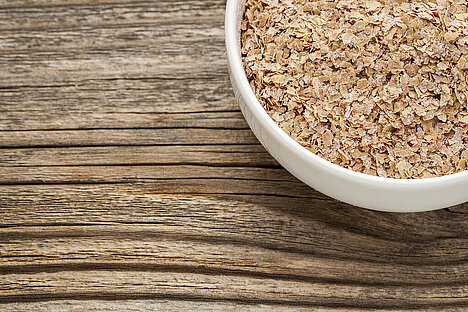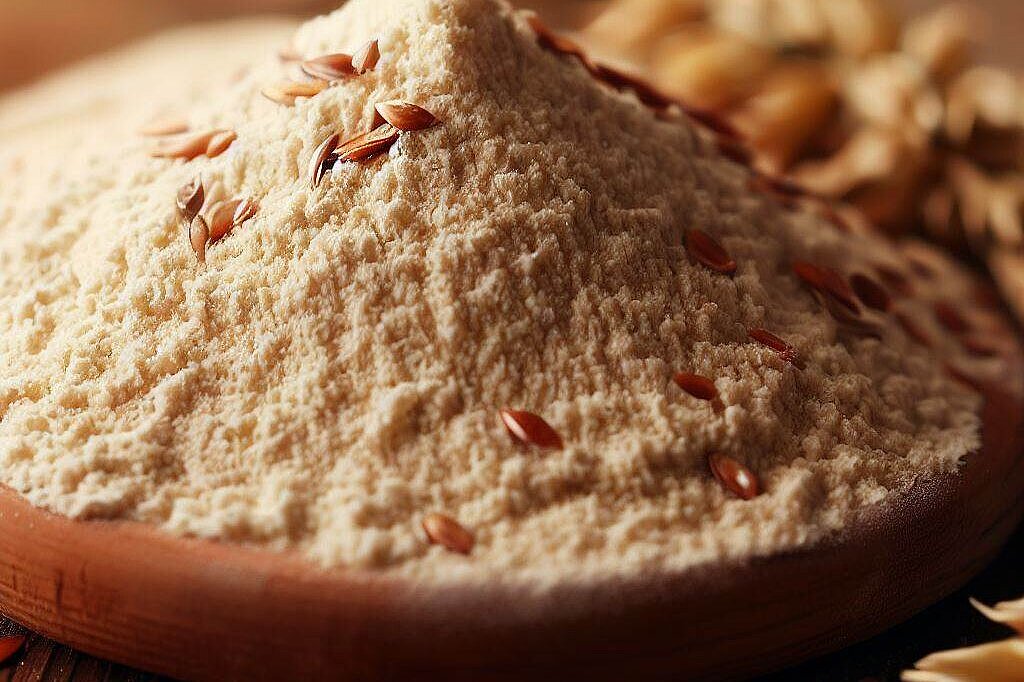Bran

What is bran?
Bran is the husk of cereal grains that is removed during processing into flour or meal. Bran contains a lot of fiber, vitamins, minerals and trace elements that are important for digestion and the immune system. Bran is available from different types of grain, such as wheat, rye, oats or spelt.
What are the benefits of bran for dogs?
Bran can have several benefits for dogs if it is fed in moderation. Firstly, bran can aid digestion by making the stool bulkier and softer. This can help with constipation or diarrhea. On the other hand, bran can increase the feeling of satiety, which can be useful for overweight dogs. In addition, bran can regulate blood sugar levels by slowing down the absorption of carbohydrates. This can be beneficial in cases of diabetes or insulin resistance.
What are the disadvantages of bran for dogs?
Bran is not suitable for every dog and can also have some disadvantages if fed too much or too often. On the one hand, bran can lead to flatulence or gastrointestinal problems if the dog does not tolerate it well or has to get used to it first. On the other hand, bran can impair the absorption of other nutrients by binding them and excreting them. This can lead to deficiency symptoms if the dog is not sufficiently supplied with other food components.
How much and how often should bran be fed?
The amount and frequency of feeding bran depends on the individual dog. There is no general recommendation as to how much bran a dog should be given per day or week. This depends on various factors, such as the dog's weight, age, state of health and other nutrition. As a rule of thumb, however, bran should only be used as a supplementary food and not as the main food. This means that bran should only make up a small part of the daily feed ration, for example 5 to 10 percent. Furthermore, bran should not be fed every day, but only occasionally or as required.
Bran is a natural and healthy part of the diet of humans and animals. For dogs, bran can have some positive effects on digestion and weight if fed in moderation. However, you should also be aware of the possible disadvantages of bran and make sure that the dog does not get too much of it or neglect other nutrients.
If you notice any signs of hypersensitivity or poisoning in your dog, you should see your vet immediately. We are not a substitute for a vet, but we try to be as accurate as possible. Every dog reacts differently and we recommend you get a second opinion or consult your vet if in doubt.
Stay healthy and take good care of your four-legged friend!😊
Similar to Bran
Wheat flour is a finely ground powder obtained from the grain of the wheat plant. Wheat is a cereal that belongs to the sweet grass family and is cultivated worldwide. There are different types of...
Oat flakes are a cereal product made from the grains of the oat plant. The grains are cleaned, steamed, roasted and rolled into flakes. Oat flakes are rich in fiber, protein, vitamins and minerals....
Rye flour is milled from the grain of rye and is available in various degrees of fineness, which determine the proportion of grain components (germ, husk and endosperm) in the flour. It is rich in...
Flaxseed meal is rich in fiber, omega-3 fatty acids, lignans and other nutrients. It can aid digestion, lower cholesterol, improve skin and coat health and boost the immune system. It can also help...



